The product recommendations in this post are recommendations by the writer and/or expert(s)
interviewed and do not contain affiliate links. Meaning: If you use these links to buy
something, we will not earn a commission.
Thanks to a recent surge in the popularity of non-dairy alternatives for traditionally milk-based products, dairy-free ice creams have become increasingly popular in recent years. Although some folks have turned to non-dairy alternatives of their favorite frozen treats out of necessity (i.e., those who are lactose intolerant and/or lifetime vegans), many others seem to be opting for these pints over classic dairy-based ice creams based on the assumption that they are perhaps “healthier” and are made with better quality ingredients. And while there are many quality dairy-free ice creams on the market, in reality, non-dairy ice creams are not always necessarily better for you than their dairy counterparts.
“One reason someone might assume that non-dairy products are more nutritious or ‘better for you,’ compared to dairy products is the growing popularity of plant-based diets and the associated health claims,” Mary Sabat, MS, RDN, LD, tells Eat This, Not That! “Many people believe that plant-based alternatives automatically equate to healthier choices because they are perceived as more natural or less processed.”
“Additionally, the negative publicity surrounding certain aspects of dairy, such as lactose intolerance, the use of hormones, or concerns about animal welfare, may contribute to the assumption that non-dairy products are inherently better,” she continues. “However, it’s important to note that this assumption is not always accurate—especially when it comes to ice cream.”
In fact, Sabat notes that “dairy products do have a nutritional edge over oat-, nut-, or soy-based alternatives in several ways.”
- Protein content: “Dairy products—particularly milk and yogurt—are excellent sources of high-quality protein,” explains Sabat. “Protein is essential for muscle growth, repair, and overall health. While non-dairy alternatives may contain some protein, it is often lower in quantity and quality compared to dairy.”
- Calcium & Vitamin D: “Dairy products are rich sources of calcium, a mineral vital for bone health, and vitamin D, which aids calcium absorption,” says Sabat. “These nutrients are naturally present in dairy but may be lower or absent in non-dairy [or dairy-free] alternatives unless they are specifically fortified.”
- Vitamin B12: “Dairy products are one of the few dietary sources of vitamin B12, which is essential for nerve function and the production of red blood cells,” she says. “Plant-based alternatives typically lack this important nutrient—unless fortified.”
4 signs you’ve picked up low-quality dairy-free ice cream
To help you cruise the frozen food section while avoiding dairy-free ice cream made with low-quality ingredients, Sabat offers her expert insight.
“When trying to choose a quality non-dairy ice cream, it’s advisable to limit or steer clear of the following ingredients,” she says.
- Added sugars: “Excessive added sugars can contribute to weight gain, dental issues, and an increased risk of chronic diseases like diabetes. Check the nutrition label for the sugar content and opt for products with lower amounts or those sweetened with natural alternatives like stevia or monk fruit.
- Artificial sweeteners: The use of erythritol, Splenda (sucralose), or NutraSweet (aspartame) can all be harmful to one’s health and, unfortunately, are found in a lot of the popular ice cream and non-dairy ice cream products,” says Sabat. “Look for products sweetened with stevia or monk fruit,” she advises.
- Trans fats: “Trans fats are unhealthy fats that raise bad cholesterol (LDL) levels and increase the risk of heart disease,” says Sabat. “Avoid products that contain partially hydrogenated oils, which are a source of trans fats.”
- Artificial additives: “Some non-dairy ice creams may contain artificial flavors, colors, and preservatives,” she explains. “These additives may have negative health effects for some individuals, such as allergic reactions or hyperactivity in children. Opt for products with simpler ingredient lists, focusing on natural flavors and minimal additives.”
How to choose quality dairy-free ice cream
- Check the ingredients: “Look for non-dairy ice creams that have a short and recognizable ingredient list,” says Sabat. “Ideally, the first few ingredients should be plant-based alternatives like oats, nuts, or soy rather than fillers or additives.”
- Look at the nutrition info: “Pay attention to the nutritional content, especially the protein, calcium, and vitamin D levels,” notes Sabat. “Choose options that have comparable or higher amounts of these nutrients compared to dairy ice cream. Also, consider the sugar content and opt for products with lower added sugars,” she adds.
- Consider fortified dairy-free ice cream options: “If you are specifically looking for non-dairy ice cream to replace the nutrients found in dairy, consider products that are fortified with calcium, vitamin D, and other essential nutrients,” suggests Sabat.
“Remember that while non-dairy ice cream can be a tasty alternative for those who are lactose intolerant, follow a plant-based diet, or have other dietary restrictions, it’s essential to make informed choices based on both ingredients and nutritional value to ensure you’re getting a quality product that aligns with your health goals,” advises Sabat.
The 5 non-dairy ice creams with the lowest-quality ingredients
With Sabat’s sagacious advice in mind, you’ll be well-equipped to identify some dairy-free ice creams that are genuinely good for you. That said, juggling a bunch of frozen pints in the frigid frozen food aisle is no one’s idea of a fun afternoon. So to help save you some time and make your grocery shopping experience that much easier, we’ve identified and rounded up a handful of dairy-free ice creams with the lowest-quality ingredients below.
Keep reading to learn which dairy-free ice creams to skip—and for more healthy eating advice to help simplify your shopping experience, be sure to check out 11 Worst Costco Foods to Avoid Right Now, According to RDs.
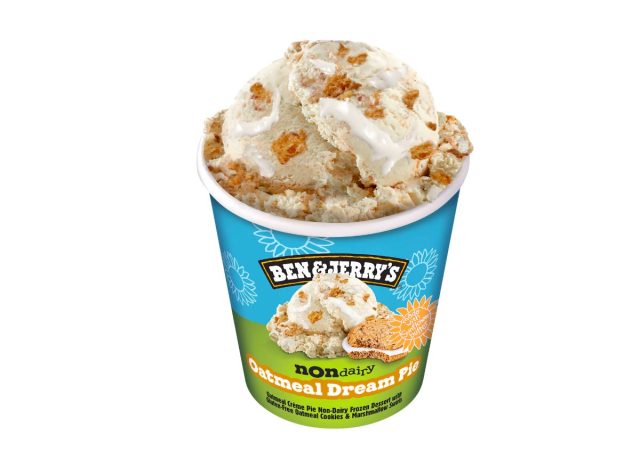

Per Serving: 300 calories, 12 g fat (7 g saturated fat), 80 mg sodium, 48 g carbs ( 1 g fiber, 29 g sugar), 2 g protein
As tasty as Ben & Jerry’s Non-Dairy Oatmeal Dream Pie™ may appear, the ingredients combined with the high-calorie count make this non-dairy ice cream seem more like a sweet nightmare. Among its many ingredients is cornstarch, which not only lacks essential nutrients but also has been linked to extreme spikes in blood sugar. It also includes corn syrup, another ingredient that can also make maintaining healthy control over your blood sugar levels challenging at best.
READ RELATED: ‘I Felt Less of a Man Knowing I May Never Be a Father’: The Hidden Trauma of Male Infertility
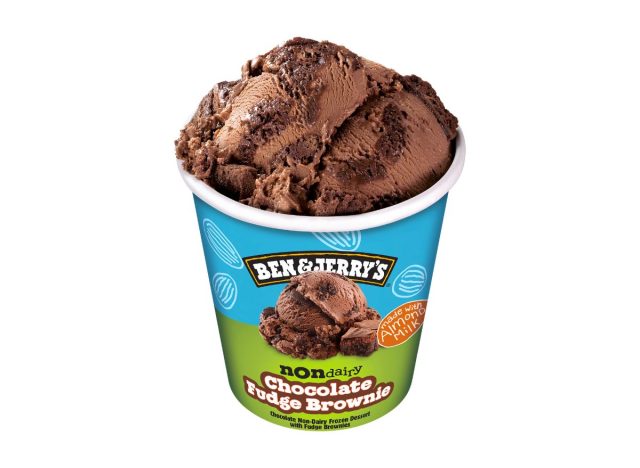

Per Serving: 350 calories, 18 g fat (11 g saturated fat, 0.5 g trans fat), 115 mg sodium, 43 g carbs (3 g fiber, 37 g sugar), 6 g protein
From a nutrition perspective, both the dairy-free and regular versions of this pint are essentially identical. But while Ben & Jerry’s dairy-enriched iteration of this ice cream flavor has a very simple, straightforward list of recognizable ingredients, its Non-Dairy Chocolate Fudge Brownie flavor combines corn syrup, corn starch, both soybean and coconut oil, and added sugars—among other questionable ingredients. It even contains a dash of trans fats, which are historically linked to an increased risk of heart disease. So unless you follow an exclusively plant-based diet or are lactose intolerant, you’re honestly better off eating the regular version, if not opting for a completely different flavor altogether.
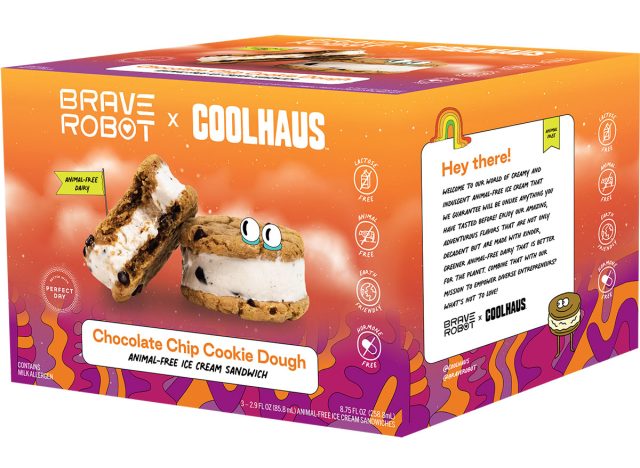

Per Sandwich: 290 calories, 14 g fat (7 g saturated fat, 0 g trans fat), 160 mg sodium, 37 g carbs (<1 g fiber, 24 g sugar), 3 g protein
Brave Robot’s collab with Coolhaus for these Chocolate Chip Cookie Dough Sammies may seem like a sweet frozen treat that isn’t too extreme of an indulgence. However, at 290 calories per sandwich and with less than one gram of fiber and three grams of protein, you’ll likely find yourself reaching for two in order to feel truly satisfied.
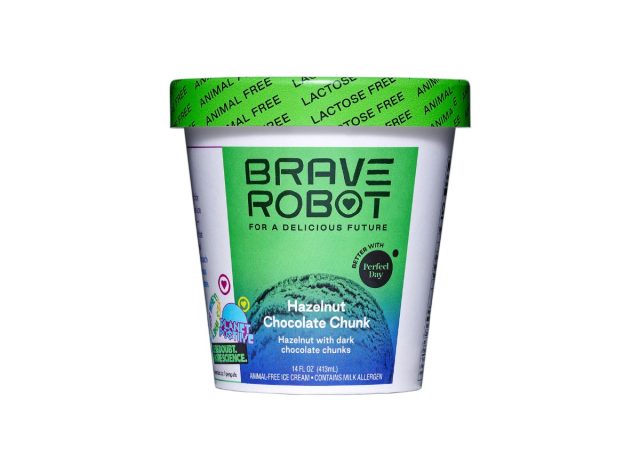

Per Serving: 390 calories, 26 g fat (14 g saturated fat), 125 mg sodium, 33 g carbs (2 g fiber, 28 g sugar), 5 g protein
On top of being nearly 400 calories per 2/3rd cup and over 1,000 per single pint, Brave Robot Hazelnut Chocolate Chunk also contains coconut oil. Though coconut oil consumption is fine in healthy moderation, it’s also high in saturated fats, which can elevate your LDL or “bad” cholesterol levels while also making you more vulnerable to cardiovascular complications. One small serving contains 70% of your daily recommended limit of saturated fat. If you polish off the pint, it climbs to 185%!
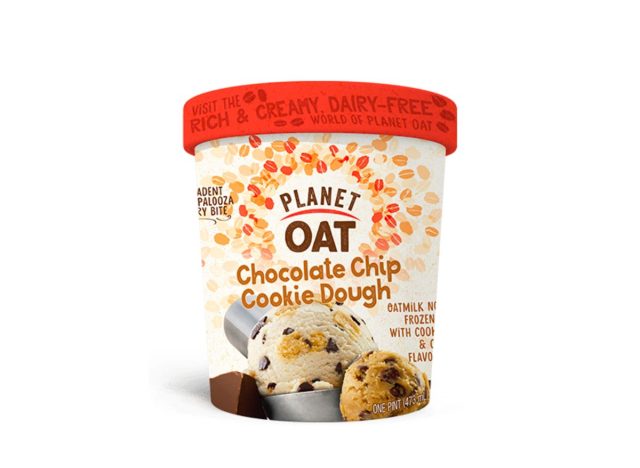

Per Serving: 280 calories, 14 g fat (10 g saturated fat, 0 g trans fat), 65 mg sodium, 39 g carbs (2 g fiber, 21 g sugar), 2 g protein
Planet Oat Chocolate Chip Cookie Dough Non-Dairy Frozen Dessert is another high-calorie dairy-free ice cream that might not be worth indulging in. With ingredients like palm oil, soybean oil, coconut oil, corn starch, powdered cane sugar, molasses, and many other sugar- or fat-based ingredients, you’re almost better off picking up a pint of dairy-enriched cookie dough ice cream.









